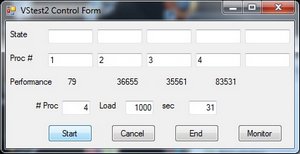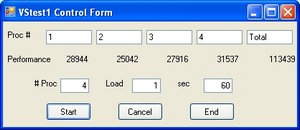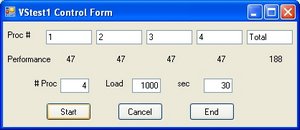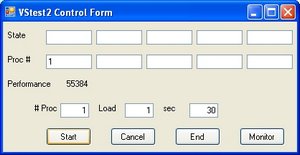- For a load factor of 1 and by selecting the Start Button 4 times the individual performance factors for processor 1 are: 76453, 70368, 50582 and 38816.
- What those numbers mean is that the more processors you use (each with a different problem) the performance of processor 1 diminishes
This is not what you maybe are expecting, because the programs in each thread (processor) are independent of each other.- For a load factor of 1 and by selecting the Start Button 4 times the total performance factors are: 76453, 141270, 155483 and 160997.
- What those numbers mean is that the more processors you use (with each a different problem) the total CPU performance does not increase lineair
141270 = 2 * 70368, 155483 = 3 * 50582 and 160997 = 4 * 38816.- For a load factor of 1000 and by selecting the Start button 4 times the individual performance factors for processor 1 are: 101, 90, 68 and 44
- For a load factor of 1000 and by selecting the Start Button 4 times the total performance factors are: 101, 181, 200 and 204.
- What those numbers mean is that the more processors you use (each with a different problem) the performance of processor 1 diminishes
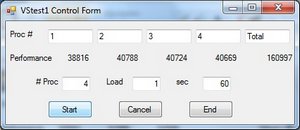
VStest1 - Load factor 1 |
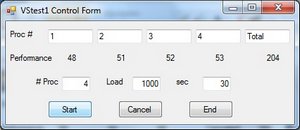
VStest1 - Load factor 1000 |
VStest1 requires the following:
- 4 BackgroundWorkers: Backgroundworkerpp1, pp2, pp3 and pp4
- 3 Buttons: StartAsyncButton, CancelAsyncButton and EndButton
- 8 Labels: Resultlabelpp1, pp2, pp3, pp4, Label1 (Proc #), Label2 (Performance), Label3 (# proc) Label4 (Load)
- 6 Text: ProcTpp1, pp2, ppp3, pp4, NprocT and LoadT
Listings VStest1: VStest1ControlForm.vb and VStest1ControlForm.Designer.vb

